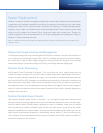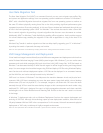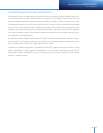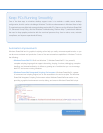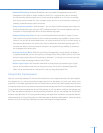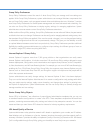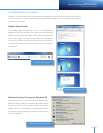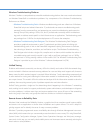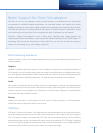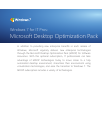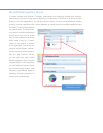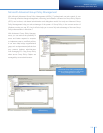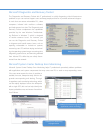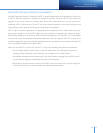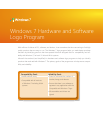
114 115
Better Support for Client Virtualization
With VDI, you can run user desktops running in virtual machines on centralized servers. VDI provides
an alternative to traditional desktop environments for nonmobile workers, with benets that include
exibility (including user access from multiple locations) and increased business continuity. Key issues with
VDI today are total cost of ownership (because VDI requires a signicant upfront investment in servers
and infrastructure) and the quality of the user experience, which is delivered over the network.
Windows 7 delivers improvements in both of these areas—including richer remote graphics and
improved performance and reliability—when coupled with Microsoft Windows Server 2008 R2 Hyper-V™
technology. Also, through the introduction of direct VHD boot, you can now use the same image to
deploy a virtual desktop as you use to deploy a typical PC.
Richer Remoting Experience
Windows 7 delivers a richer virtual desktop experience that is closer to the experience provided by a local
Windows desktop.
Graphics
Windows 7 provides multimonitor support for virtual desktops. Enterprises can now realize the benets of
VDI in scenarios such as nancial trading, where users need to view information on multiple physical moni-
tors. Other graphics improvements include remoting of the Aero UI and more uid video performance with
Windows Media Player. Specically engineered 3-D applications are also remoted more efciently.
Audio
With support for bidirectional audio, workers can now use microphones, meaning that remote desktops
can use functionality such as Voice over Internet Protocol (VoIP), speech recognition, and unied commu-
nications. Improved audio playback over low-latency connections helps mitigate A/V synchronization
issues when remoting multimedia content.
Devices
Workers can easily print to a local printer from their client PCs while operating in a VDI environment,
without the need to install printer drivers on the server.
VHD Boot
VHD boot is a feature of Windows 7 that helps ease the transition between virtual and physical environ-
ments, by helping enterprises reuse the same master image within a VDI infrastructure and on physical
PCs. For example, imagine a call center with 100 users who work remotely through VDI but need the
same desktop images as their counterparts who work onsite using traditional PCs. VHD boot is designed
for users in a highly managed environment and is best used with technologies such as Folder Redirection
and Roaming User Proles so that the user’s state is not stored in the image.
Windows 7 for IT Pros:
Reduce Costs by Streamlining PC Management
Better Support for Client Virtualization



